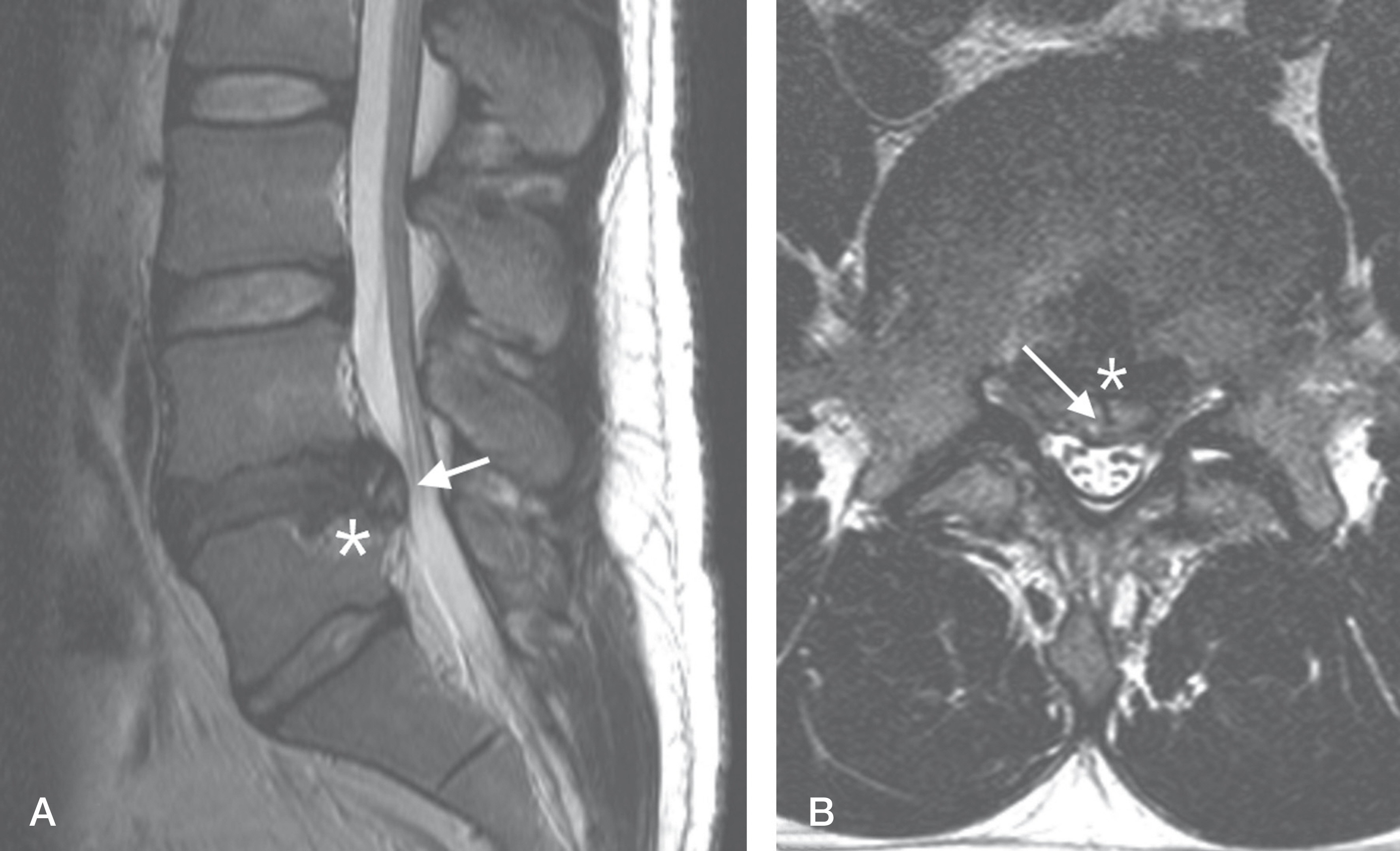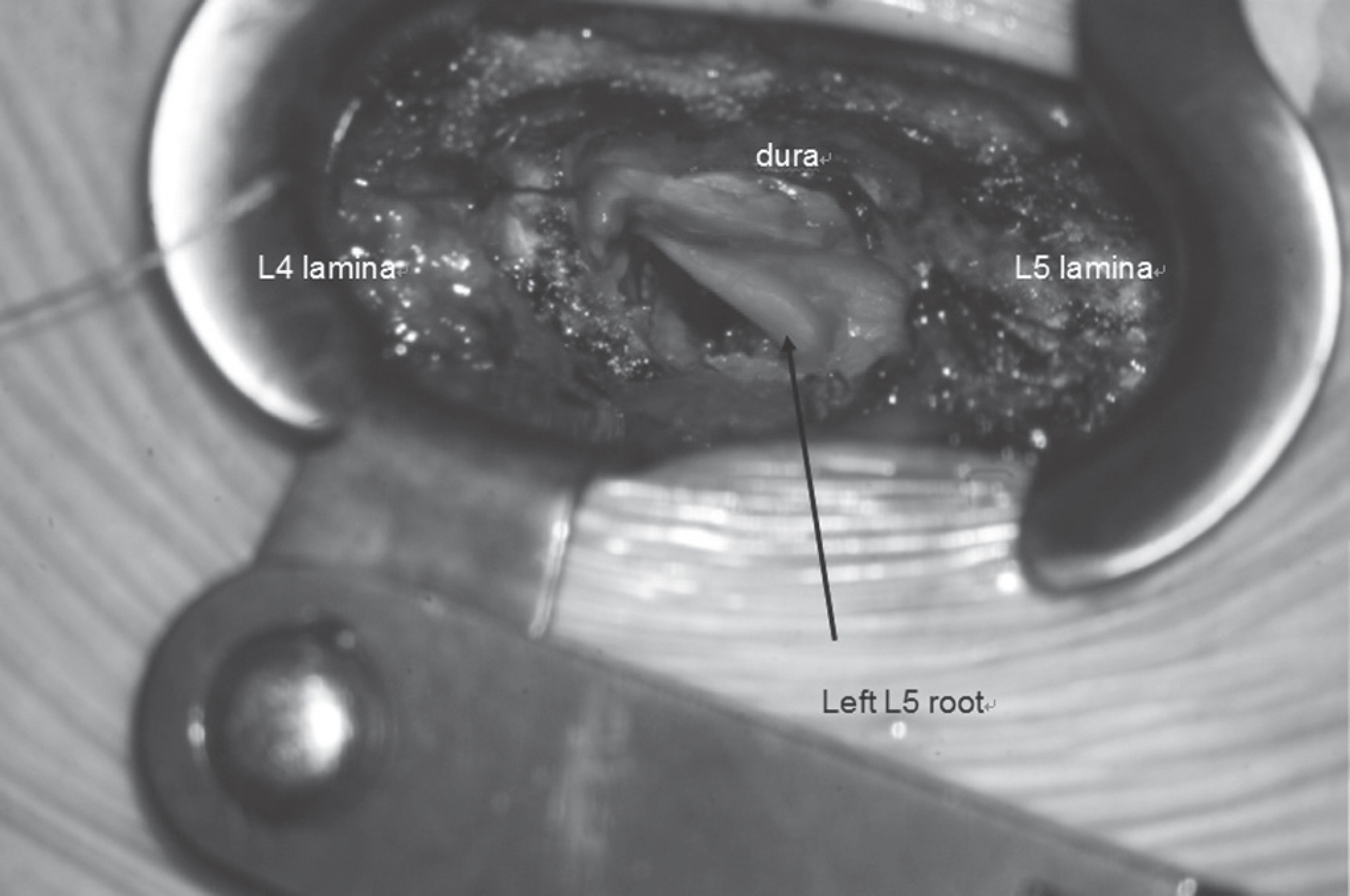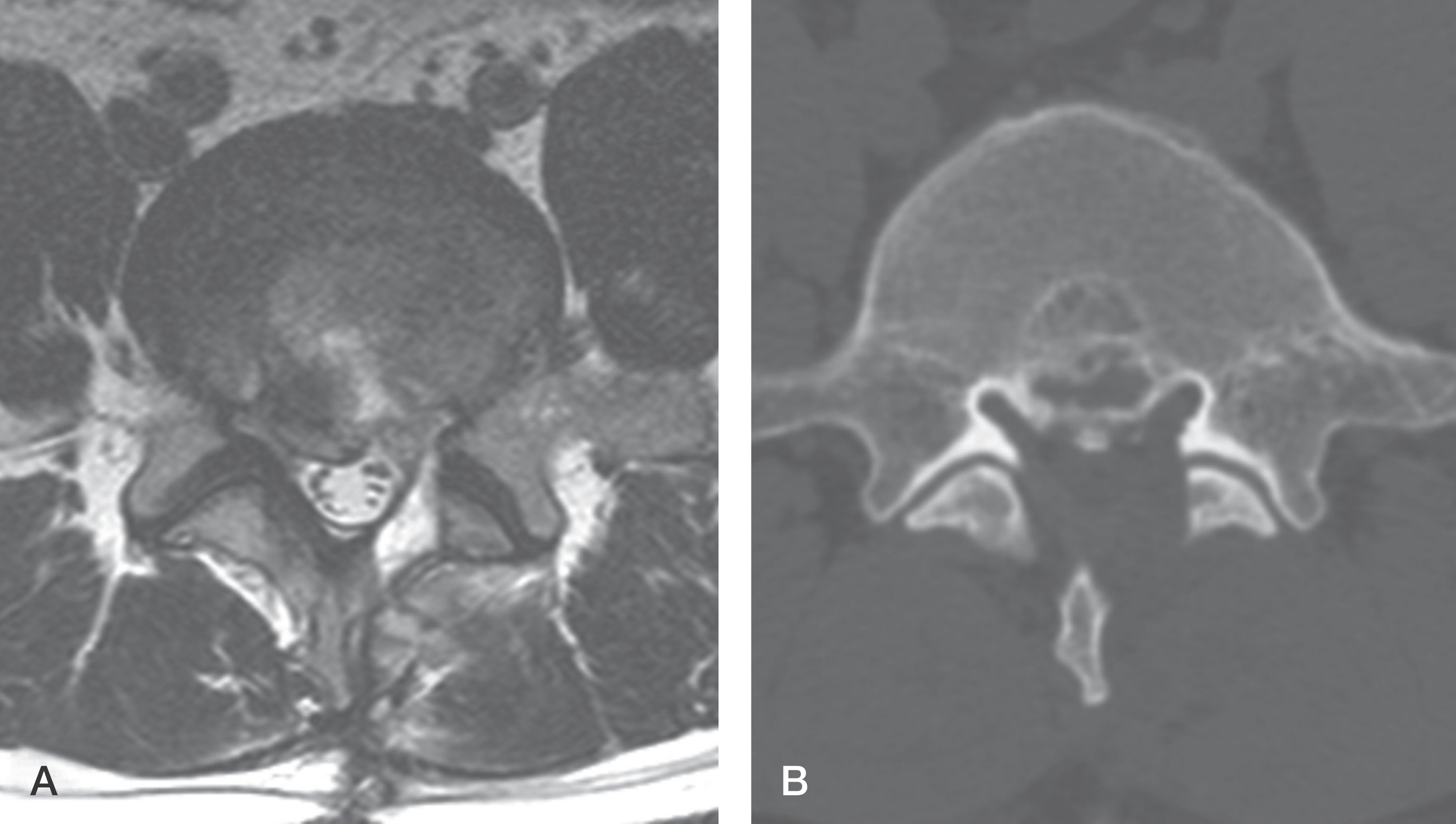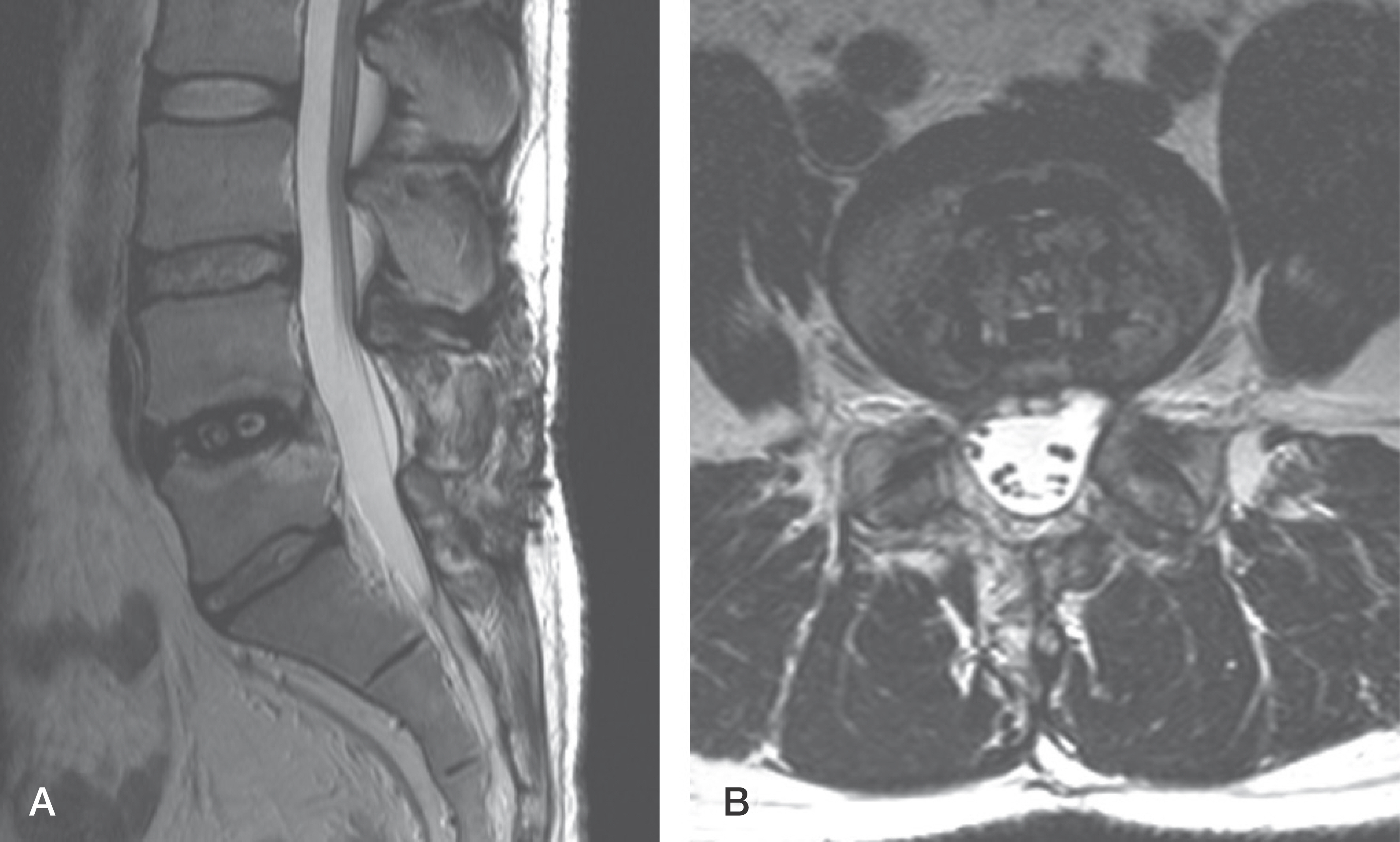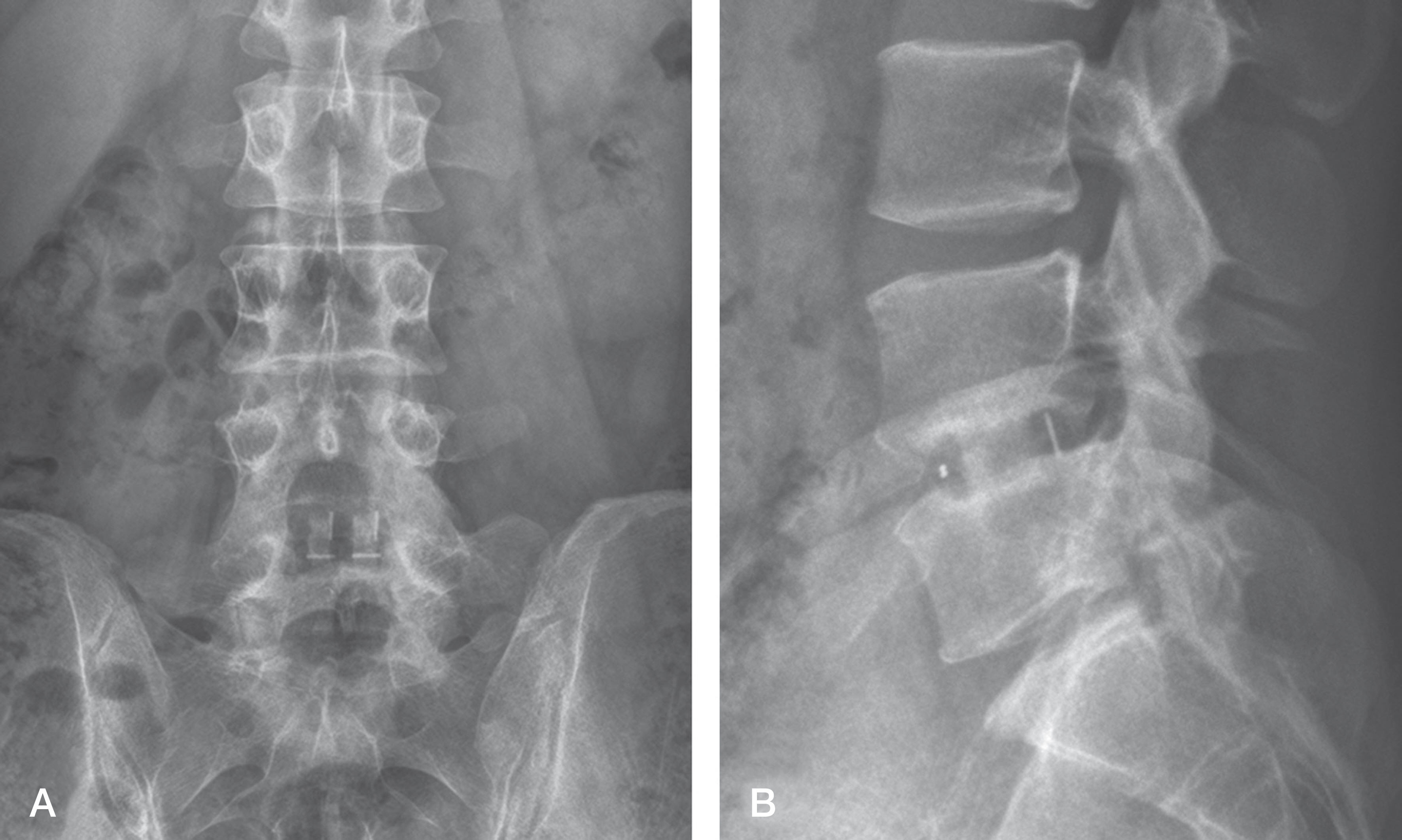J Korean Soc Spine Surg.
2015 Sep;22(3):118-122. 10.4184/jkss.2015.22.3.118.
Posterior Ring Apophysis Fracture Associated with Lumbar Disc Herniation Treated by Immobile Bony Fragment Excision: A Case Report
- Affiliations
-
- 1Department of Orthopaedic Surgery, College of Medicine Kangwon National University, Chuncheon, Korea. firekimdo@gmail.com
- 2Department of Orthopaedic Surgery, Asan Medical Center, College of Medicine, University of Ulsan, Seoul, Korea.
- KMID: 2068931
- DOI: http://doi.org/10.4184/jkss.2015.22.3.118
Abstract
- STUDY DESIGN: A case report.
OBJECTIVES
We report a case of posterior ring apophysis fracture (PRAF) with lumbar disc herniation treated by immobile bony fragment excision. SUMMARY OF LITERATURE REVIEW: PRAF causes severe radiculopathy, so treating with surgery is common.
MATERIALS AND METHODS
A 30-year-old male diagnosed with PRAF with lumbar disc herniation was treated with discectomy, but his clinical symptoms were not relieved. Consequently, bony fragment excision, extended laminectomy and interbody fusion were also done.
RESULTS
Radicular pain was relieved and showed good clinical outcome.
CONCLUSIONS
When treating PRAF, bony fragment excision and extended laminectomy should be considered even if an immobile bony fragment exists.
Figure
Reference
-
1. Akhaddar A, Belfquih H, Oukabli M, Boucetta M. Posterior ring apophysis separation combined with lumbar disc herniation in adults: a 10-year experience in the surgical management of 87 cases. J Neurosurg Spine. 2011; 14:475–83.
Article2. Beggs I, Addison J. Posterior vertebral rim fractures. Br J Radiol. 1998; 71:567–72.
Article3. Yang IK, Bahk YW, Choi KH, Paik MW, Shinn KS. Posterior lumbar apophyseal ring fractures: a report of 20 cases. Neuroradiology. 1994; 36:453–5.
Article4. Savini R, Di Silvestre M, Gargiulo G, Picci P. Posterior lumbar apophyseal fractures. Spine (Phila Pa 1976). 1991; 16:1118–23.
Article5. Epstein NE. Lumbar surgery for 56 limbus fractures em-phasizing noncalcified type III lesions. Spine (Phila Pa 1976). 1992; 17:1489–96.
Article6. Chang CH, Lee ZL, Chen WJ, Tan CF, Chen LH. Clinical significance of ring apophysis fracture in adolescent lumbar disc herniation. Spine (Phila Pa 1976). 2008; 33:1750–4.
Article7. Asazuma T, Nobuta M, Sato M, Yamagishi M, Fujikawa K. Lumbar disc herniation associated with separation of the posterior ring apophysis: analysis of five surgical cases and review of the literature. Acta Neurochir (Wien). 2003; 145:461–6.
Article8. Shirado O, Yamazaki Y, Takeda N, Minami A. Lumbar disc herniation associated with separation of the ring apophysis: is removal of the detached apophyses manda-tory to achieve satisfactory results? Clin Orthop Relat Res. 2005; 431:120–8.9. Banerian KG, Wang AM, Samberg LC, Kerr HH, We-solowski DP. Association of vertebral end plate fracture with pediatric lumbar intervertebral disk herniation: value of CT and MR imaging. Radiology. 1990; 177:763–5.
Article
- Full Text Links
- Actions
-
Cited
- CITED
-
- Close
- Share
- Similar articles
-
- Fractures of Lumbar Ring Apophysis
- High Lumbar Disc Herniation Treated With an Anterolateral Approach: Case Report
- Lumbar Disc Herniation Combined with Posterior Apophyseal Ring Separation in a Young Child: A Case Report
- High Lumbar Disc Herniation Treated with A Modified Posterolateral Approach: Case Report
- Fracture of the First Sacral Vertebral Ring Epiphysis Simulating Disc Rupture: A Case Report

